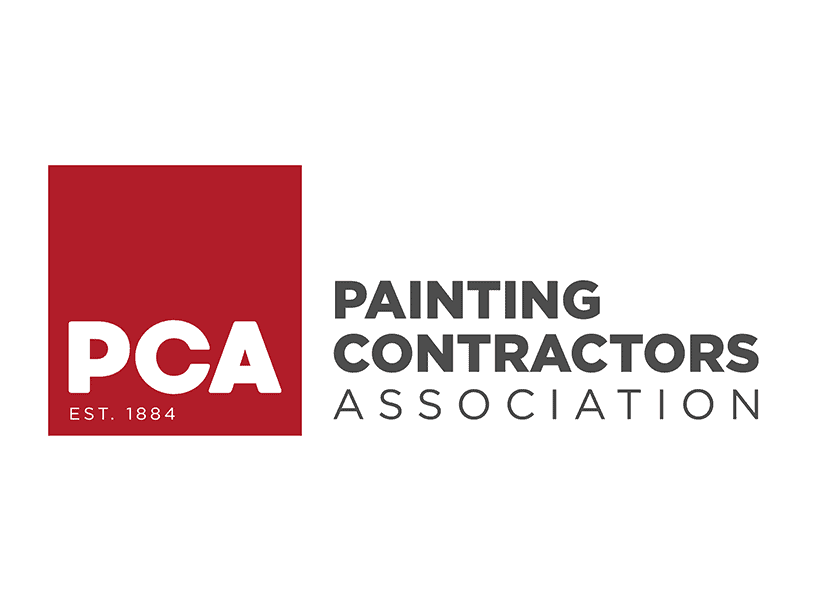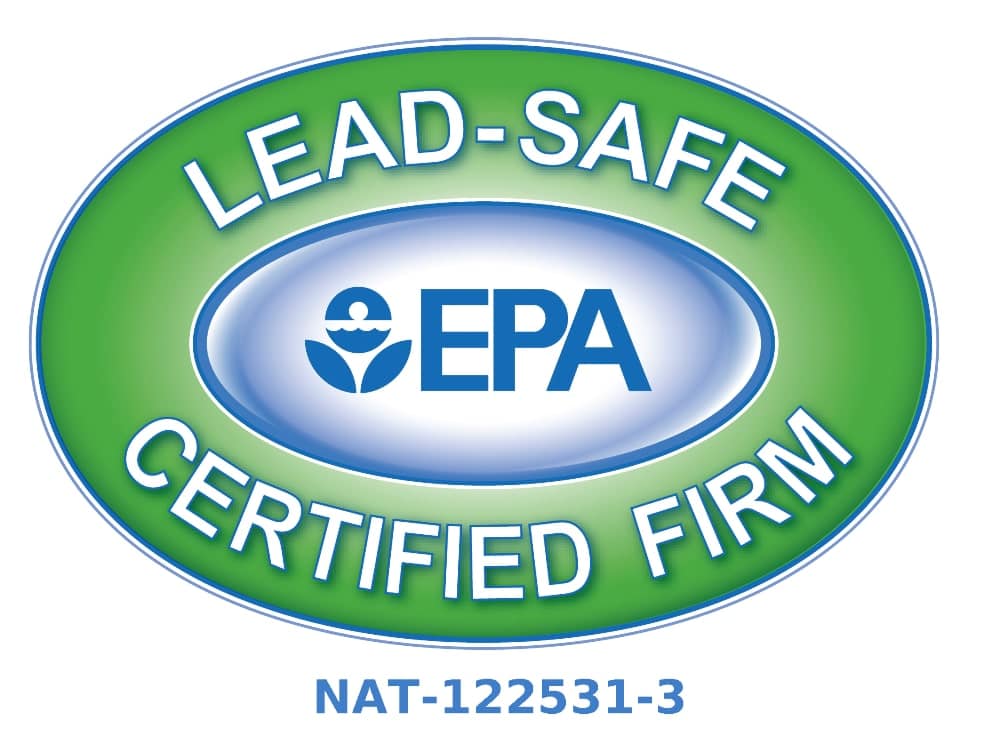
18 Nov FAQ: Drywall & Trim Repairs—Best Practices from Painting Contractors in Reston, VA
Small dents, hairline cracks, gapped trim, and peeling caulk can make fresh paint look tired before it even dries. The fix isn’t just “more paint”—it’s smart, methodical repairs done before the first coat. Below you’ll find a skimmable guide to how professional Painting Contractors in Reston, VA, approach drywall and trim work to keep your finishes smooth, straight, and durable.
If you’d like tailored advice for your home, connect with our team of Painting Contractors in Reston, VA, for a walkthrough and detailed proposal.
Why does repair quality determine paint quality?
Paint highlights what’s underneath. When seams, nail pops, or wood movement are left unaddressed—or when gaps and joints aren’t sealed—new color can actually magnify flaws. Pros focus on:
- Substrate stability: Solid surfaces that hold primer and paint
- Uniform texture & sheen: Patches that blend seamlessly at every viewing angle
- Moisture control: Repairs that won’t re-fail because the source problem was ignored
- Clean lines: Tight caulk joints and square profiles that frame walls and doors
Drywall issues you’ll commonly see in Reston homes
- Nail pops from seasonal framing movement
- Hairline cracks at corners, door headers, and stair walls
- Settlement cracks at ceiling-to-wall joints or long seams
- Corner bead dents from daily traffic or furniture moves
- Previous patches telegraphing through paint due to poor feathering
- Water stains from past leaks (even after the leak is fixed)
Each has a best-practice repair path; choosing the right one keeps the fix from reappearing.
Best practices for drywall repairs (room-by-room reliability)
1) Diagnosis first
Before any mud comes out of the bucket, the pros verify what caused the damage. A tiny ceiling crack under an attic HVAC line, for example, could be humidity-related. Fix the source, then the surface.
2) Materials that match the job
- Setting-type compounds (e.g., 20/45/90-minute) for fast, strong builds and fewer shrink lines
- Pre-mixed lightweight joint compound for final skims and feathering
- Paper tape for seams and stress points (fiberglass mesh only in certain cases)
- Stain-blocking primer for water or smoke marks
- Bonding primer where previous glossy paint or patches might cause adhesion issues
3) Nail pops and fastener repairs
- Back out or sink the loose fastener
- Add a new drywall screw into solid framing, an inch above/below.w
- Cover with setting compound, embed paper tape if needed, skim and sand.
- Spois is primed to normalize porosity before finishing coats.
4) Cracks along seams or corners
- Open the crack slightly with a 5-in-1 tool to create a clean channel
- Apply setting compound, embed paper tape, and knife smooth.
- Skim wider (8–12″) with a lightweight compound to blend.
- Sand with fine-grit sandpaper, vacuum, then prime the entire repair.
5) Corner bead dents
- If minor, fill and feather; if crushed, replace the damaged bead section
- Use a setting compound to lock the corner, then skim both sides for a crisp edge.
6) Medium holes (golf ball—softball size)
- Use a California patch or backer-board method
- Fill with setting compound, then skim wider to merge with the surrounding texture.
- Prime the entire area; avoid painting patches unprimed (they flash under light)
7) Water stains and previous leak areas
- Confirm the leak is fixed
- Remove any soft gypsum to convert it to solid material.
- Rebuild with a setting compound or replace the board as needed.
- Prime with a true stain blocker before finish coats
8) Texture matching and sheen control
- Even “smooth” walls have micro-texture; pros feather repairs wide and finish with a consistent roller nap.
- For orange peel or knockdown, match the spray pattern before painting the full wall so the repair disappears in raking light.t
Trim repair fundamentals that make paint lines pop
Trim frames your rooms. Clean profiles, tight joints, and smooth surfaces are what make colors look deliberate.
Typical trim issues
- Open miters at casings and baseboards
- Gaps where trim meets walls from seasonal movement
- Nicked edges and rough grain telegraphing through paint
- Wood rot near windows or exterior doors.
- Failed caulk lines that collect dust and shadows
Best practices for trim repairs
1) Tighten and secure first
Loose trim is re-nailed or screwed into studs. Fastener holes are filled with wood filler (not lightweight spackle) for a sandable, durable plug.
2) Sanding sequence
Start with 120–150 grit to level, then 180–220 for a paint-ready finish. Vacuum and tack cloth between grits to keep dust from lodging in pores—crucial on semi-gloss finishes.
3) Caulking that lasts
Use paintable caulk at trim-to-wall joints and inside corners. Tool it for an even bead; thin, consistent caulk looks better and moves with the seasons.
4) Prime for adhesion and grain lock
- Bare or stained wood: stain-blocking, bonding primer
- MDF: seal edges (they’re thirsty) to prevent fuzzy fibers under paint
- Previously glossy trim: degloss and prime so new coats bite
5) Replacing vs. repairing
If rot is present or profiles are too damaged, replacement is faster and cleaner. Pros match profile height and reveal so new pieces blend seamlessly with existing trim.
The sequence that pros follow (so edges stay razor-sharp)
Order matters for speed and cleanliness:
- Protect & isolate: Cover floors, mask sensitive edges, set up dust control
- Structural repairs: Drywall fixes, trim fastening, and carpentry first
- Priming: Spot or full-area priming to unify porosity and block stains
- Caulking: After primer, so the beads sit on a sealed surface and don’t sink
- Trim finish coats: Satin or semi-gloss applied and allowed to fully cure
- Walls last: Cut along cured trim for the cleanest lines and least touch-up.
This sequence also keeps rooms functional during multi-day projects.
Dust control and household comfort during repairs
Professional prep minimizes disruption:
- Plastic containers and zipper doors when sanding heavily
- HEPA vacs attached to sanders for dust capture at the source
- Daily resets: Walkways cleared, tools stacked, rooms swept
- Ventilation plans: Fans and filtration to reduce odors and speed drying
If you work from home, a project manager can stage noisier sanding when you’re not on calls.
Primers that solve real-world problems
- Stain-blocking primers (for water, smoke, or tannins) stop bleed-through.
- Bonding primers grab onto glossy enamels, tile-like trim paints, or slick surfaces.
- PVA drywall primers seal new or highly patched walls for a consistent sheen
- High-build primers help level minor texture on doors and trim before topcoats.
Skipping the right primer is why many DIY patches “flash” or re-stain.
Sheen’s choices for durability and a cohesive look
- Ceilings: Flat or ultra-flat to hide small waves and reduce glare
- Walls: Eggshell for family spaces; satin for higher traffic or moisture
- Trim & doors: Satin or semi-gloss for wipeability and crisp edges
A subtle sheen step—flat (ceiling) → eggshell (walls) → semi-gloss (trim)—adds depth without looking shiny.
Moisture and movement: designing repairs that won’t re-fail
- Bathrooms & kitchens: Choose moisture-tolerant paints and ventilate well
- Window trim: Inspect for condensation issues; prime and caulk accordingly
- Seasonal movement: Expect small shifts; flexible caulk and taped seams at stress points keep lines closed
Addressing the environment—humidity, leaks, ventilation—is as important as the putty knife.
Timelines: how long do these repairs add?
- Single-room drywall touch-ups: Often same day for repairs + next day paint (using setting compounds)
- Multiple rooms with trim work: 2–4 days depending on repair count, curing, and sanding
- Extensive carpentry or water damage: Add time for material replacement and dry-down verification
Your estimator will create a room-by-room plan to keep living spaces usable.
Cost drivers you should actually care about
- Repair volume and complexity: More patches, taller walls, detailed casings = more time
- Material system: High-quality primers, caulks, and topcoats cost more up front but save rework
- Access & protection: Hard-to-reach stairwells or built-ins require careful staging.
- Color & coverage: Big color shifts or deep hues may need extra coats
A clear proposal from your Painting Contractors in Reston, V A will spell out repairs, primer types, coat counts, and sheen so you can compare apples to apples.
Quality checks the crew should perform (and you can too)
- Side-light test: Inspect repaired walls in low, raking light to catch ridges
- Hand test on trim: Run fingertips along casings; they should feel glassy, not gritty
- Caulk continuity: Beads should be smooth and consistent with no pinholes
- Profile alignment: Baseboards and casings align at corners without proud edges
- Primer coverage: Stains fully locked; no patchy suction spots before finish coats
These checks happen before paint rolls out across whole walls.
Maintenance that keeps everything looking new
- Dust trim with a microfiber cloth periodically.
- Wipe walls gently with mild soap and water for scuffs (test low first)
- Keep a labeled quart of each color for small touch-ups.
- Inspect caulk joints yearly—refresh where seasonal gaps appear.
- Address minor nail pops early; they’re quick fixes when small.
DIY or hire out? A simple decision framework
Consider hiring Painting Contractors in Reston, VA when:
- Repairs will be seen in harsh light (two-story foyers, hallways with windows)
- You have multiple substrates (MDF, pine, prior enamel) that need targeted primers.
- There’s evidence of moisture or a past leak that you aren’t certain is resolved.
- You want fast turnaround with dust control, proper curing, and durable results.
Spot-filling and painting a closet? DIY might be fine. Matching a living room wall at sunset? That’s when pro-level feathering and priming pay off.
A sample plan: living room with nail pops, a cracked corner, and rough trim
Day 1
- Protect floors and furniture
- Set new screws at pops; remove or set old nails.
- Tape and bed the cracked inside corner with paper tape + setting compound
- Sand trim, fill fastener holes with wood filler, and prime bare spots.
- Spot-prime drywall repairs
Day 2
- Skim wider with a lightweight compound; sand and vacuum
. - Caulk trim-to-wall seams and inside corners
- Prime full wall if repairs are extensive; prime trim for uniformity
- First trim coat (satin/semi-gloss)
Day 3
- Second trim coat; let cure
- Cut and roll walls (2 coats as needed)
- Final walkthrough: side-light check, tiny touch-ups, hardware back on, cleanup
Result: smooth walls, crisp lines, and a finish that still looks new months later.
Ready to straighten every line and smooth every wall?
If you want drywall and trim work that holds up—and paint that looks freshly applied long after move-in day—our Painting Contractors in Reston, VA can help. We’ll assess your spaces, map out repairs, and deliver a clean, durable finish on a schedule that works for you.
FAQs
1) What’s the difference between setting compound and pre-mixed mud?
Setting compounds chemically cure (20–90 minutes) and resist shrinkage, making them ideal for first coats and structural fills. Pre-mixed mud sands are easier to use and perfect for final skims and feathering.
2) How do you keep patches from flashing through paint?
We spot-prime or full-prime to equalize porosity, match roller texture across the whole wall, and ensure the same sheen hits every surface. That stops dull or shiny blotches from appearing over repairs.
3) Why use paper tape instead of mesh on cracks?
Paper tape adds strength and, when embedded correctly, creates a thinner profile that’s easier to hide. Mesh can be useful for certain repairs, but it is more prone to ridging if not buried properly.
4) Can you repair MDF trim cleanly?
Yes—seal cut edges, use wood filler (not spackle) for dings, sand progressively, and prime before finish coats. MDF needs a little extra sealing to avoid fuzzy edges under paint.
5) Do I need to repaint the whole wall if I only have a small patch?
Small, perfect patches are possible, but in critical light areas, we recommend painting corner to corner for uniform sheen and texture. That’s how you repair truly disappear.
When you’re ready, schedule a visit with our Painting Contractors in Reston, VA to get clear pricing, a clean workflow, and results that last.

Mike Katounas is the owner of Home Works Painting, a painting business in Northern Virginia. He has over 15 years of experience in residential interior and exterior painting, drywall installation/repair, carpentry, wallpaper removal, power washing, commercial painting, color consultation, and staining/sealing. Their service areas include Chantilly, Fairfax, Herndon, Oakton, Reston. Mike takes pride in his work, and he always follows a strict code of conduct that includes the use of quality paint, a clean workspace, and an honest, respectful approach to his customers.












Sorry, the comment form is closed at this time.